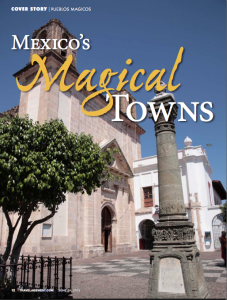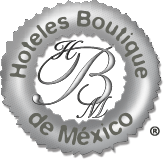Mexico´s Magical Towns

Authentic Mexico can be found in the country’s Pueblos Magicos
The Pueblos Magicos program began in 2001. To date, there are 83 towns in all 31 states that have been designated Pueblos Magicos by Mexico’s Ministry of Tourism. To become a Magical Town there are the obvious requirements — the towns need to have historical importance, unique cultural traditions and natural beauty. The towns also need to have a population of at least 20,000 residents and be located within about a two-hour drive from a major tourist destination. A major appeal for many of the Pueblos Magicos will be as a day-trip from a larger city or resort area.
Once a town is chosen, it undergoes a process of careful modernization of its infrastructure and tourism-related businesses to increase its ability to welcome tourists. There have been instances of towns being removed from the list for not maintaining the necessary standards; for example, Tepoztlan, in Morelos, was removed and eventually reinstated. There has also been an instance of a town becoming too mainstream to remain a Pueblos Magicos, such as San Miguel de Allende, when it was designated a UNESCO World Heritage Site in 2008.
Some of the Magic Towns will be familiar to travelers, such as Taxco and Todos Santos. Others are likely to be relatively obscure, such as Creel, a logging town in Chihuahua, and Real de Catorce, in San Luis Potosi, a silver mining town with a spiritual heritage encompassing the Catholic religion and shamanic practices of the indigenous Huichol people.
Accessing the Magic
While Pueblos Magicos may be off the beaten track, that doesn’t mean your clients have to settle for substandard conditions. Since these towns are chosen for their cultural heritage and beauty, creative entrepreneurs have opened sophisticated hotels and restaurants — many of which are in restored historic structures. Hotels tend to be boutique properties that blend in perfectly with the town.
The company Mexico Boutique Hotels was established well before the Pueblos Magicos program, although the synergy between the two belies that fact. Pueblos Magicos and Mexico Boutique Hotels are a great match, since they share a similar charter of celebrating the art, cuisine and folkloric traditions of Mexico in often out-of-the-way destinations within the country.
“There are actually more Pueblos Magicos than we can match,” said Sylvie Laitre, director general of Mexico Boutique Hotels. “There are visitors to the Caribbean who will choose to experience a different island on each trip. They may visit Jamaica one year, but instead of repeating the experience, they visit St. Lucia next year, for the first time. There’s a similar type of traveler who collects Pueblos Magicos and our boutique hotels. They have experienced one or more, and they want to expand their experiences rather than repeat them.”
Creative entrepreneurs have opened so
In addition, Laitre mentioned what she referred to as “circuit business,” in which clients plan a route that includes overnights in several Pueblos Magicos. Most commonly, when a client settles on two destinations, they generally com- bine a beach and a city; when they choose three destinations, the itinerary often includes three cities within easy reach of each other via car.
Laitre has some basic advice for those considering a self-drive vacation visiting several Pueblos Magicos.
“First of all, if driving in Mexico is out of your comfort zone, there are a variety of options,” noted Laitre. “Besides bus service, which is of higher quality than my native Canada, it is really easy and cheap to hire a driver. Our hotels can make those arrangements, including bilingual drivers who also function as an informal tour guide. Hiring a driver is definitely worth the investment. If your clients decide to drive themselves, it’s helpful if one of them speaks Spanish. I also advise that they limit their driving to the daylight hours.”
Laitre provided a snapshot of the type of traveler who would be a good match for a visit to a Pueblos Magicos.
“It should be someone who has traveled a bit. They are people who want an authentic experience. They’re interested in the art and cuisine of a destination.”
Carlos Berdegue, president and CEO of El Cid Resorts and vice president of

